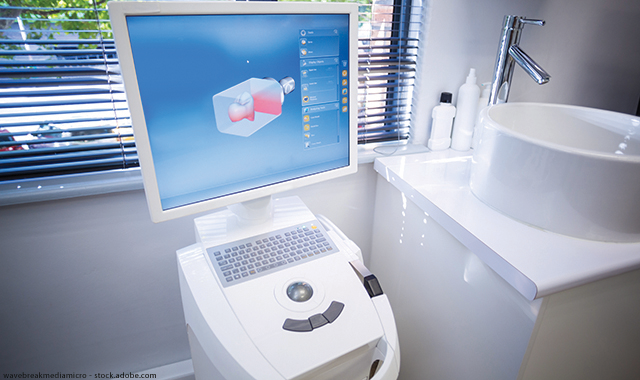How to implement digital impressions in your dental practice
Implementation can seem daunting, but there are ways to make it easier.

You did it - you invested in the scanner. You're taking the leap to digital impressions. So now what?
We spoke to our panel of experts about how to implement digital impressions in your practice.
1. Deal with the learning curve
Dr. Nathaniel Lawson, DMD, Ph.D., division director of the division of biomaterials at the UAB School of Dentistry, says a significant obstacle to investing in digital impressions is the learning curve. He recommends investing the time to visit a trade show or dental laboratory to try the device - and let staff try the device as well.
Tija Hunter, CDA, agrees, adding that she feels like dentists don't take full advantage of all the features of their CEREC system. She thinks training is necessary to use the machine to its full potential.
“A lot of times doctors just get the four-hour training they get with their purchase. You can’t do that. If you are going to invest in that kind of machinery, then you need to invest in the training,” Hunter says.
Trending article: 5 reasons to use digital impressions
2. Be prepared
Most problems with digital impressions stem from insufficient prep work before taking an impression. Josh Gall, general manager of Axi Dental Laboratories, says some dentists think that scanning won’t require the same amount of prep work, but it does. Also, bad habits follow you from traditional to digital impressions.
“If you take horrible regular impressions, then you’ll take horrible digital impressions too. Whether you’re capturing it via digital scanner or impression material, it’s the same prep work,” Gall says.
“Usually when there is a problem, it’s because of the prep,” Hunter says. “Preps are different in CAD/CAM than in traditional crowns.”
Dr. Jason Goodchild, DMD, director of clinical affairs for Premier Dental Products Company, adds that with some crowns and bridges, you might have to change your prep for digital impressions.
Also, not every case is ideal for digital impressions. You have to know which cases are appropriate for digital impressions.
3. Run a test
One of the dentists Gall has worked with for a long time was a skeptic about the reliability of digital impressions. They agreed to test out the scans to see if they produced restorations that were as accurate as those from his traditional impressions.
“We will design one restoration purely via digital and one off a conventional impression,” Gall explains. “It was surprising how accurate a crown made from two different impressions could fit.”
Trending article: The state of intraoral scanning
4. Consider a laser

When it comes to digital impressions, everyone agrees that subgingival margins are difficult to capture - and when they go far into subgingival, it can be next to impossible. Dr. John Flucke, DDS, advocates for dentists to consider using a soft-tissue laser to expose the margins better, even in deep areas.
“Doing it all with retraction cord, it might be more of a challenge. But using a soft-tissue laser can eliminate a lot of that,” he says.
Dr. Flucke says sometimes scanner companies will throw in a laser as part of the purchase price, making it easier to combine the use of both in the practice.
5. Give yourself time to adjust
Change is hard. If you’ve been taking traditional impressions your entire career and you decide to try digital, it's natural to have doubts. Gall admits he did when digital impressions first started coming into his lab.
“But when you start to get the calls that it was a success, you realize this is going to work,” Gall says. “The future of dentistry is digital impressions.”